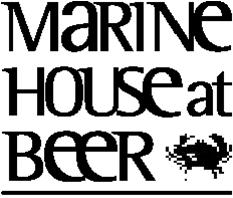Transcript
It’s a fascinating coast between St Ives and Land’s End. It’s a coast I know very well from my youth when I was rock climbing and there’s a climbers’ club hut along the coast at Bosigran.
I’ve painted all over the place in the last few years and I’m beginning to realise now that really the West Country has got all I need, both on Dartmoor and down in Cornwall. This coast is probably the most spectacular bit of coast in Cornwall with the mining remains and so I really decided I’d concentrate this exhibition on that piece – just three or four miles around St Just, Pendeen, Geevor, all these sort of places. And this one, Tinner’s Coast, is probably typical of the whole show, but it brings together most of the factors that I’ve put in different ways through the paintings. They’ll often adopt a viewpoint which is nowhere near the place I could be. For instance, this painting: it would appear that I’m over the sea flying in towards the coast, with the sea and the cliffs and then the landscape and the moorland. That seems to come naturally to me, this sort of multi-layered approach. I like playing with the perspective. That means that some things will be horizontal and some things will be tipped vertically and that’s very typical of most of my paintings.
Why this painting encapsulates all that I had in mind when I was doing this series is that it really brings together all the factors that are probably prevailing in that piece of coast – the moorland along the background, the string of settlement cottages which are always built rather sort of in a ribbon fashion along the coast road which is typical of those cottages, the field patterns. There’s a lot of small field patterns that run down towards the cliff edge. It’s very typical of West Penarth. And of course there are mining remains, the engine houses and other remains. I did focus quite a lot on drawing those remains and understanding the shapes that fall within the remains. Then of course the cliffs themselves, with the verticality of the cliffs that come down into the sea. This is all granite. It’s a very special thing about that coast, the nature of the granite and I know it well from when I used to climb on the cliffs – just like that!
This painting is called Carn Du which is the name for another headland and mine remains on the same piece of coast. What I’d like to draw your attention to here a little bit is to do with the devices I use for composition. I do spend a lot of time looking around the landscape and this particular landscape is full of images, stone images, arches, as well as the obvious things like engine houses. And in this painting I’ve used some of the manmade images, the circular wells, which change the perspective and so on, and nearly always the manmade I will exaggerate or illustrate by giving them sharp edges as against natural edges. So we have the buildings, we have the stones. When I go to sketch these various elements around the landscape, I use them then as tools, as a vocabulary to work on all my paintings. So once I’ve got a few, simple images which are evocative of that place, I can use them on all my paintings. These circular shapes which are typical of the stones surrounding the mine shafts and the obvious things like engine houses. Once you have an image of an engine house I don’t really need to draw any more engine houses. It becomes a simplification.
This painting is called Kenidjack. Now Kenidjack’s the name of yet another of the mining remains in the same area. I did tend to pick some of the names and titles because I just love the sound of the words rather than being accurately from where they were from, but anybody who checks on the OS map will find that all the titles are within the area of four or five miles. They’re all there but sometimes I’ve used a good deal of licence about how I’ve titled them. This piece is probably a little bit more abstract, a little bit more evocative. I think it’s more of an emotional response to the coast than perhaps some of the other paintings. I have very much in mind the way that the cliffs fall to the sea and the way that the load lines, that’s the mineral lines of tin and copper and arsenic, run down the cliffs and actually under the sea. The engine houses very often are placed right on the edge of the cliffs because they were mining under the sea.
A good friend of mine and a potter ceramicist Richard Godfrey who shows his work at the Marine House gave me this brush which in fact is a road kill brush made of squirrel tail, which when wet and loaded with paint gives wonderful, evocative free lines and that’s how a lot of this line work was done. I think a very strong evocative piece, again fairly monochrome, simple colour arrangements, a lot of depth and texture


